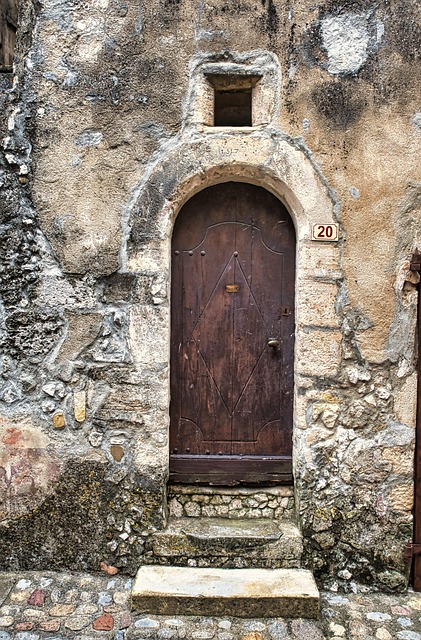Multi-Factor Authentication (MFA) enhances security in high-security areas through multiple verification methods, significantly reducing unauthorized access risks. Touchless entry solutions incorporating MFA, like biometric authentication with mobile one-time passcodes, secure both physical and digital access points while minimizing disease transmission risks. Implementing these solutions offers advantages in healthcare, research labs, and government buildings, streamlining access control and ensuring only authenticated individuals gain entry without compromising user experience. A strategic approach involves assessing current security measures, choosing suitable MFA solutions, enrolling users, defining access policies, testing, training, and regular monitoring. Case studies show MFA's effectiveness across sectors like power grid control rooms and transportation hubs, protecting critical infrastructure from internal and external threats.
In today’s digital era, securing high-security zones is paramount. Multi-factor authentication (MFA) stands as a game-changer, providing layers of protection beyond traditional passwords. This article explores MFA’s pivotal role in safeguarding critical infrastructure and sensitive areas. We delve into the benefits of touchless entry solutions, offering enhanced security without compromising accessibility. Additionally, we provide a step-by-step guide to implementation and showcase successful real-world deployments, emphasizing MFA’s effectiveness in mitigating risks and ensuring safety.
Understanding Multi-Factor Authentication (MFA) and Its Role in High-Security Environments
Multi-Factor Authentication (MFA) is a security process that requires users to provide multiple forms of verification before granting access to sensitive areas or systems. In high-security zones, like government facilities, military bases, or data centers, MFA plays a pivotal role in safeguarding against unauthorized entry and potential cyber threats. By demanding more than just a password, it adds an extra layer of protection, ensuring that even if a hacker obtains a user’s password, they still can’t gain access without the other factors.
In these environments, touchless entry solutions incorporating MFA become essential tools. For instance, biometric authentication, such as fingerprint or facial recognition, combined with one-time passcodes sent to a user’s mobile device, allows for secure access while eliminating physical contact, which is particularly important in reducing the spread of diseases like COVID-19. This advanced security measure not only strengthens physical entry points but also digital access points, thereby providing all-encompassing protection for high-value assets.
Benefits of Touchless Entry Solutions for Enhanced Security
Implementing touchless entry solutions offers a multitude of benefits for enhancing security in high-security zones. By eliminating physical contact with access points, organizations can significantly reduce the risk of contamination from biological agents and mitigate the potential for the transfer of germs, viruses, or bacteria. This is particularly crucial in environments where strict hygiene protocols are essential, such as healthcare facilities, research labs, and government buildings.
Moreover, touchless entry systems improve security efficiency by streamlining access control processes. They enable faster and more convenient entry for authorized personnel while ensuring that only authenticated individuals gain entry. This dual advantage of enhanced security and streamlined operations makes touchless entry solutions a game-changer in maintaining robust security measures without sacrificing user experience.
Implementing MFA: A Step-by-Step Guide for High-Security Zones
Implementing Multi-Factor Authentication (MFA) in high-security zones is a comprehensive process that ensures an enhanced layer of protection. Here’s a step-by-step guide to help organizations navigate this crucial security upgrade:
1. Assess Current Security Measures: Begin by evaluating the existing access control system, identifying vulnerabilities, and understanding the specific security needs of the high-security zone. This involves assessing biometric data collection methods, network infrastructure, and existing hardware compatibility.
2. Choose an MFA Solution: Select a robust MFA solution tailored to your requirements. Touchless entry solutions can offer advanced features like facial recognition, fingerprint scanning, or token-based authentication. Ensure the chosen system integrates seamlessly with your current access control architecture.
3. Implement User Enrollment: Create a user-friendly enrollment process where individuals within the high-security zone register their biometric data or obtain security tokens. This step ensures that authorized personnel are equipped with the necessary tools for MFA verification.
4. Configure Access Control Policies: Define and implement access control policies, specifying who has permission to enter and under what conditions. These policies can vary based on roles, time of day, and specific security protocols. By configuring these rules, you ensure only legitimate users gain access.
5. Test and Train Users: Conduct thorough testing of the MFA system to identify any potential issues or glitches. Provide comprehensive training sessions for personnel, explaining the new process and ensuring they are comfortable with the touchless entry solutions. Regular demonstrations can help familiarize users with the technology.
6. Monitor and Update: Continuously monitor the performance of the MFA system, keeping an eye out for any security breaches or system failures. Regularly update the software to patch vulnerabilities and incorporate the latest security enhancements.
Case Studies: Successful Multi-Factor Authentication Deployments in Critical Infrastructure
In recent years, critical infrastructure sectors have increasingly adopted multi-factor authentication (MFA) as a robust security measure, especially with the rise of remote work and cyber threats. Successful implementations of MFA in high-security zones have demonstrated its ability to bolster defense against unauthorized access. For instance, power grid operators have integrated touchless entry solutions, leveraging biometric data and one-time passwords, ensuring only authorized personnel can access control rooms during critical operations.
These case studies highlight the flexibility and effectiveness of MFA across various sectors. In transportation hubs, such as airports, MFA protocols have been employed to manage secure areas, where employees and contractors must demonstrate multiple forms of identity before gaining entry. This not only enhances physical security but also safeguards sensitive data and systems from internal and external threats. The success stories in these domains serve as a testament to the adaptability and necessity of multi-factor authentication in today’s digital landscape.
Multi-factor authentication (MFA) and touchless entry solutions are transforming high-security zones by offering robust protection without compromising accessibility. As demonstrated through successful case studies in critical infrastructure, implementing MFA alongside innovative touchless technologies enhances security measures while streamlining operations. By following a well-defined implementation guide, organizations can navigate the process effectively, ensuring their sensitive areas remain secure and efficient in today’s digital landscape.
